Current Affairs Sep 2018 - Environment
1 - Eight Avian Species Declared “Extinct”

According to a report in the British newspaper, The Guardian - scientists have declared eight species of birds to be extinct in what are being seen as the first avian extinctions of the 21st century. Out of this, five extinctions have been occurred in South America and have been attributed to deforestation.
The names of those birds are:
The Pernambuco pygmy owl, Glaucidium mooreorum, of Brazil.
The glaucous macaw, Anodorhynchus glaucus (last seen in 1998), and Spix’s (little blue) macaw, Cyanopsitta spixii, of South America has been declared extinct.
New Caledonian lorikeet, Charmosyna diadema of New Caledonia.
The Alagoas foliage-gleaner, the cinnamon-colored cryptic treehunter, Cichlocolaptes mazarbarnetti of Brazil
The Java lapwing, Vanellus macropterus, of Java
The poo-uli, also known as the black-faced honeycreeper
The study was conducted by non-profit “BirdLife International” and was published in the journal Biological Conservation.
2 - World's Largest Ever Bird Named as Vorombe Titan

After decades of conflicting evidence, several debates and publications, scientists have finally put the 'world's largest bird' debate at end by naming it as “Vorombe Titan.” The meaning Vorombe Titan is 'big bird' in Malagasy and Greek language.
Found on Madagascar Island, surprisingly, the weight of this bird reached up to 800 kg and height is up to 3 meters.
For 60 million years the colossal, flightless elephant bird, Aepyornis maximus tracked the savannah and rainforests of Madagascar until it was hunted to extinction around 1,000 years ago.
3 - Seasonal Filling of Reservoir May Trigger Earthquakes
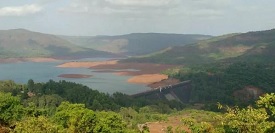
As per the report, the seasonal filling and emptying of reservoirs in India may cause measurable deformation of the surrounding rock that reduces the strength of nearby faults. As a result of this, earthquake may occur.
To track the rocks movement (especially the uplift and subsidence of rock layers around such reservoirs, researchers (in India) use satellite-based radar data (called (InSAR) along with global positioning system (GPS) technology. The research teams measured crustal deformation around the Koyna and Warna reservoirs in western India, as well as the Tehri, Ukai and Dharoi reservoirs located in different regions of India.
The researcher team found that the eastern block of the Koyna-Warna fault zone appears to be moving faster to the northeast in comparison to the western block, a motion that may potentially increase stress on faults in the region. Besides, seasonal filling and emptying of the Koyna and Warna reservoirs are deforming the surrounding rock layers as well.
4 - Bombay High Court Freezes Mangrove Destruction
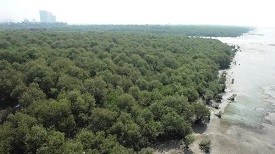
The Bombay High Court ordered a “total freeze” on the destruction of mangroves in the state (Maharashtra). Further, the court said that the destruction of mangroves in any part of the state cannot be allowed for any use unless the court finds it essential for the public benefit.
The Bombay High Court noticed that “The destruction of mangroves offends the fundamental rights of the citizen and Article 21 of the Constitution of India… it is a mandatory duty of the state and its agencies and instrumentality to protect and preserve mangroves.”
Further, the court instructed to create a 50m buffer zone around mangrove land in which no construction activity or dumping of debris should be permitted.
5 - India Sets Record in Total Forest Restoration
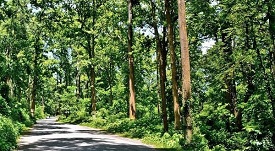
During the period 2011 to 2017, India has restored a total of 9.8 million hectares of degraded land. In such forest restoration, Government agencies are playing a major role, as it has contributed to 95% restoration; however, the remaining 5% was contributed by NGOs and other private companies.
This restoration activity is part of the “Bonn Challenge,” which is a global effort to bring 150 million hectares of deforested and degraded land into restoration by 2020 and 350 million hectares by 2030. About 46 countries have signed the Challenge and pledged their commitments for green covers.
After this achievement, India has submitted its report with title “Bonn Challenge and India: Progress on Restoration Efforts Across States and Landscapes.” India became first-ever publication from any country in the world, giving detailed progress on forest landscape restoration under the global treaty.
6 - UP Govt. Decided to Set Up 'Tiger Protection Foundations'
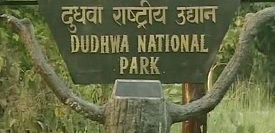
With the objective to promote eco-tourism, the Government of Uttar Pradesh has all set to set up ‘Tiger Protection Foundations’ in three forest ranges. The project will start with Dudhwa National Park and then move to Pilibhit and Nishangarh (Bijnore). This will not only bring these ranges on the global map but also help in empowering tribal residing in these zones.
Sidharth Nath Singh, the Government spokesman, has said that these Tiger Protection Foundations will be self-sufficient and neither the Central not state governments need to finance the project. In fact, “The Foundation will generate its own resources, which could be through tourist entry fee or by organizing events or seminars. The focus will be given to promote eco-tourism and provide jobs to tribal community residing in the reserve forest zone.”
7 - Hollywood Actor DiCaprio to Build World's Greenest Island Resort
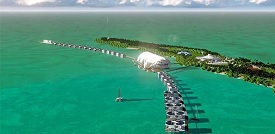
Hollywood actor Leonardo DiCaprio has announced his plan to create "the world's most sustainable island resort," which will push the boundaries of green design, architecture and eco-tourism to a new level.
To materialize this project, the actor and environmental activist DiCaprio is working with Restorative Hospitality, a subsidiary of ethical real estate firm Delos. He will develop a 104-acre 'restorative island' at Black-adore Caye in Belize.
DiCaprio said that "this project is leading a new way in eco-tourism, development and green building and demonstrates that human development can be truly restorative and beneficial for the environment."
The project will feature 68 villas, 48 estate homes, 3 restaurants, 1 spa, and a private clubhouse. It will be incorporating sustainable building techniques that will restore and regenerate the surrounding ecosystem and reverse the effects of climate change.



